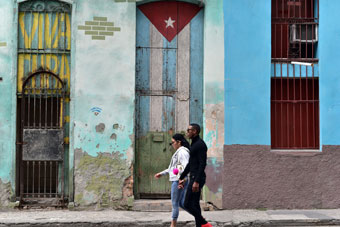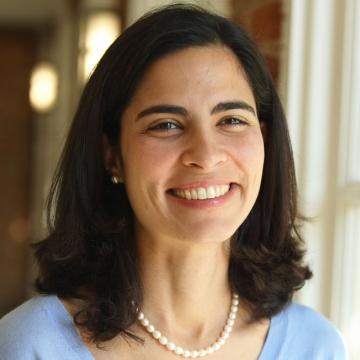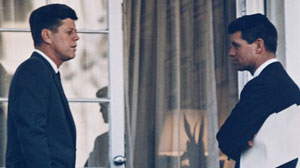Is a reversal of US–Cuba policy imminent?
President Trump weighs an about-face on President Obama's historic opening to Cuba
There is growing speculation President Trump may soon announce changes to US–Cuba policy. Whether these will be largely symbolic or more wide ranging, however, remains uncertain. Given the rise in politically motivated arrests and an escalation of repressive tactics in Cuba, the president has an opportunity to send a message to the Cuban government reaffirming America’s commitment to human rights and democratic ideals.
A review led by the National Security Council has been underway for several months, and it’s reasonable to assume that Trump may be seeking a political win with one of his key constituencies, having taken the White House with an estimated 54 percent of the Cuban-American vote. The threat to democracy and escalating violence against civil society in Venezuela may also serve as a useful political context and motivator for announcing such a move.
Trump took office in the wake of the second anniversary of normalized relations with Cuba. His presidency also coincided with a delicate time of transition on the island, as the passing of Fidel Castro in late November marked 57 years of “revolution.” His death, coupled with the continued challenges of a failed socialist system and the ongoing loss of Venezuelan economic support, raises questions and concerns about Cuba’s political and economic future. Given this uncertainty, it’s useful to take stock of what’s transpired under normalization and what might come next.
The last two years have seen the reopening of embassies in both Havana and Washington, the removal of Cuba from the State Sponsor of Terrorism list, resumption of commercial air and cruise service, an expansion of allowable travel by American citizens, lifting caps on remittance amounts, direct mail service, and easing restrictions on the purchase of Cuban cigars and rum. The Obama Administration also initiated bilateral cooperation on several fronts, including counter narcotics and law enforcement, migration, medical research, and environmental concerns. And although progress is unlikely, President Obama also initiated discussions on property claims and other US assets confiscated in the early days of the Castro regime.
Normalization also ushered in numerous US commercial regulatory changes. In the latest round this past October, Obama announced that US companies would be able to enter into binding contracts when and if the current embargo is finally lifted. In addition, American firms providing services that “directly benefit the Cuban people,” such as in infrastructure projects, have the green light to conduct business. In late December, for example, Google announced a deal with Cuba’s state-run telecommunications firm to facilitate faster internet service. US banks are also now authorized to open corresponding accounts in Cuba, and credit cards are slowly becoming operational. Together, these policies seem to have been partially motivated by an effort to raise expectations and create vested interests that might eventually lead to a lifting of the embargo. Unfortunately, they also granted legitimacy to Cuba’s leadership without proof of change on any meaningful dimension related to human rights.
Given nepotism, the island’s poor infrastructure, and the lack of an independent judiciary, Cuba remains a risky investment prospect.
Nevertheless, the Cuban government appears hesitant to fully reciprocate. Doing business there remains largely restricted to joint ventures with GAESA—a conglomerate owned and managed by the state and Cuba’s Revolutionary Armed Forces, and led by Raul Castro’s son-in-law, General Luis Alberto Rodriguez. Given this nepotism, the island’s poor infrastructure, and the lack of an independent judiciary, Cuba remains a risky investment prospect.
Other highly contentious issues continue unresolved and without progress, especially in the area of human rights. According to Human Rights Watch, the Havana-based Cuban Commission for Human Rights and National Reconciliation (CCDHRN), and Freedom House, politically motivated arrests are on the rise. There are reports of more than 10,000 in 2016, and a similar number was recorded in 2015. The CCDHRN also reports a near 100 percent increase in the number of political prisoners in the last year, as well as an expansion of repressive tactics. Though the US and Cuba have initiated a dialogue on this front, it remains weak and unlikely to yield substantive change. During Obama’s historic 2016 visit to Havana, Raul Castro simply denied the existence of political prisoners. Given the differences on the issue, little if any change should be expected from Cuban leadership.

Raul remains firmly in charge as president of a one-party system in which Cuba’s Communist Party (PCC) controls all aspects of government and civilian life. Though Raul has said he will step down as president next year at the age of 87, observers contend it’s likely he will remain "first secretary," a position of significant influence that his brother also held. Regardless, the 7th Communist Party Congress held just a month after Obama’s visit revealed that little if any substantive change should be expected in the near future. While no successor to Raul has been named, analysts point to a few possibilities, including his son and advisor, Colonel Alejandro Castro Espin, who’s been in charge of intelligence in Cuba’s Ministry of the Interior. Others suggest Miguel Diaz-Canal, first vice president and former minister of higher education, who like Espin, is in his 50s. Whoever leads Cuba in the future, one can be sure that the primary objective of the central leadership will be to maintain the same system of government and control that’s been in place since Soviet times.
Many of Obama’s actions were made via executive authority, making them easier to dismantle.
As for US policy under the Trump administration, the new president may attempt to renegotiate with the Cuban government, or at the very least curtail certain regulations, perhaps beginning with remittances and allowable travel. Many of Obama’s actions were made via executive authority, making them easier to dismantle. That said, Trump will undoubtedly face pushback from an expanding range of business interests that have become vested in the current policy. The recent introduction of two bipartisan bills related to easing tourist travel and eliminating business barriers suggest the kind of opposition the president may face.
Though Trump expressed support for normalization while campaigning back in 2015, he reversed course in Florida before the election, demanding a “better deal.” And all this amid Newsweek's revelation that in 1998 the Trump Corporation allegedly looked into the possibility of investing in Cuba, an act that would have been illegal. In February, the president met with Florida Senator Marco Rubio, saying he and Rubio, “have very similar views on Cuba.” More recently, Rubio expressed his confidence that Trump would treat Cuba “like the dictatorship it is.” Though not a definitive signal of policy change, Trump seems to be considering a meaningful reversal.
All this adds up to a significant degree of uncertainty for Cuba and for the future of US relations with the island. If Raul remains as stubborn as we’ve seen in the last two years, progress on human rights and commercial activity is likely to be limited. But Raul has also reluctantly acknowledged Cuba’s dire economic state, its bloated bureaucracy, and the inefficiency of its workforce. He also desperately needs a substitute for the support that had been supplied by Venezuela, and prior to that, the Soviet Union. So Trump has room for negotiation. Whatever position Trump takes going forward, let us hope that human rights—and actually improving the livelihood of the Cuban people (i.e., an actual living wage)—are at the very top of his agenda.

